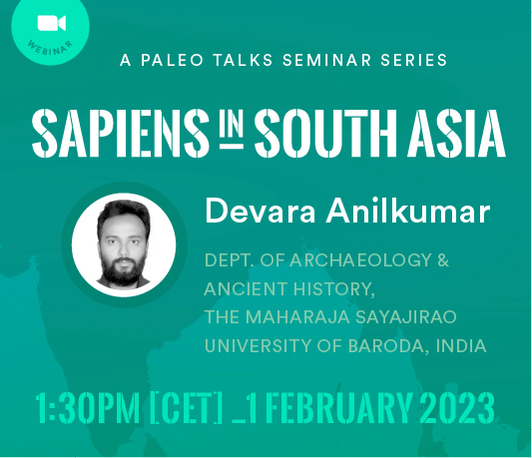Behavioural or Biological? Recent Perspectives on the Origins and Evolution of Middle Palaeolithic Culture in South Asia
- Date: Feb 1, 2023
- Time: 01:30 PM - 02:30 PM (Local Time Germany)
- Speaker: Devara Anilkumar
- Dept of Archaeology & Ancient History, the Maharaja Sayajirao University of Boda, Vadodora, India
- Location: Zoom
- Host: Department of Archaeology

The emergence of the Middle Palaeolithic/Stone Age is considered a significant milestone in human evolutionary studies. This culture is characterized by the dominance of hierarchical core reduction techniques (e.g., Levallois and Discoidal) and linked to complex hominin behaviour. The roots of this culture are debated between single-origin and spread through dispersals vs in situ developments in Africa, Europe and South Asia. However, recent evidence suggests that some of these transitions are due to behavioural change rather than biological change or dispersals. However, technological and chronological characterizations of the origins and evolution of Middle Palaeolithic culture and associated factors are poorly understood. It is crucial to document the mechanisms behind the convergent evolution of this culture, which helps to understand the shifts in hominin behavioural patterns and dispersals during the last 500 ka in the Old World.
Preliminary investigation of Palaeolithic sites situated in the Gundlakamma and adjoining river basins, Andhra Pradesh, India, shed significant light on the origin and evolution of Middle Palaeolithic culture in South Asia. Lithic assemblages dated to mid-Middle Pleistocene suggest indigenous development and evolution of Middle Palaeolithic culture. The nature of these lithic assemblages and their geological and chronological context will be discussed. Further, the temporal evolution of these assemblages dated between >400 to 145 ka will be examined to understand the changes and similarities through time.